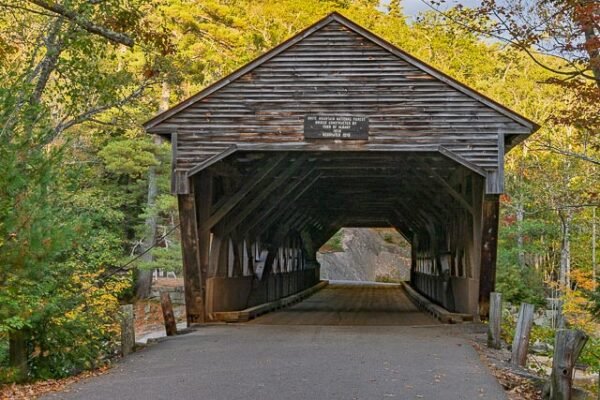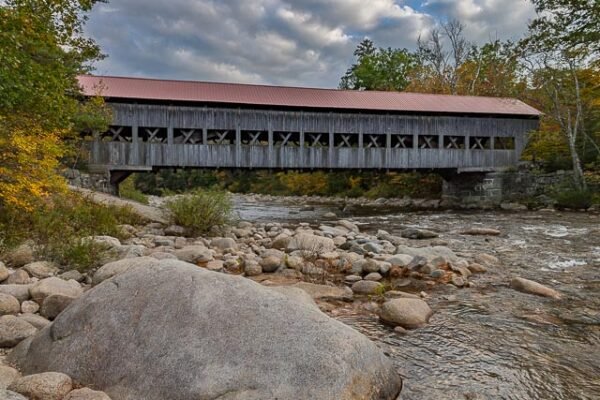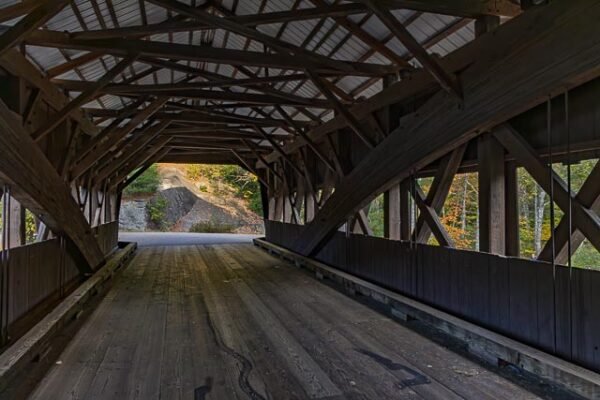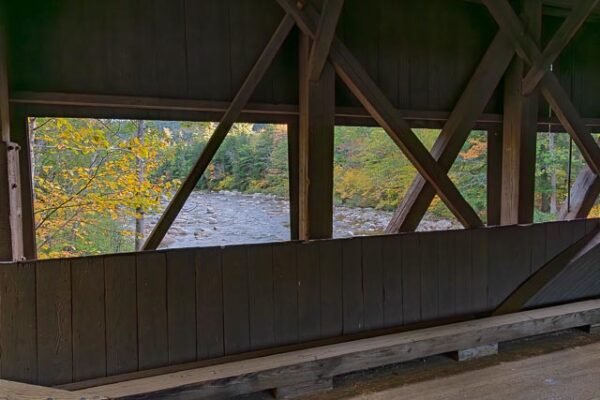Albany Covered Bridge
The Albany Covered Bridge is also known as “White Mountain National Forest Bridge. The Albany Covered Bridge is a historic bridge located in the White Mountains near the Kancamagus Highway. Albany Covered Bridge was built in 1858 but destroyed by a storm which flooded the Swift River and swept away the new bridge. The bridge was quickly rebuilt and remained usable for over 100 years before needing to be renovated in 1970. This covered bridge was constructed in 1858 and spans 120 feet across the Swift River in central New Hampshire. After its renovation in the late 1900s, the Albany Covered Bridge became strong enough to support vehicular traffic. This is a popular place for landscape photography, especially during the fall.
The Albany Covered Bridge was first constructed in 1858. Repairs and restorations over the years have kept the bridge in the usable condition you see today. The site has a large parking lot that will accommodate buses and restrooms are available. There are several interpretive panels on both sides of the bridge and a granite fishing pier on the north side. The bridge is closed during the winter months but foot traffic is welcome. The parking lot is maintained year-round.
Where it is:
The Albany Covered Bridge spans the Swift River just north of the Kancamagus Highway. The bridge is actually located on Passaconaway/Dugway Road just a short distance from the Kancamagus Highway six miles west of Conway.
There is a 7’ 9” height restriction for vehicles using the bridge.
Hours:
The bridge is on a public road and is open 24 hour a day.
The bridge is closed during the winter months but foot traffic is welcome.
Cost:
No fees are required for the Albany Covered Bridge.
Click Here for full page gallery
More Photographic Destinations in New Hampshire
Interactive Google Map
Use the map + – controls to zoom in and out, use the Map drop-down to change to “Map”, “Satellite”, “Hybrid”, or “Terrain” views. Drag the little man icon from the upper left corner to a map location for street level view. Click on a pushpin for more information about the Photographic Destination, then click on the title to go to the location page.





